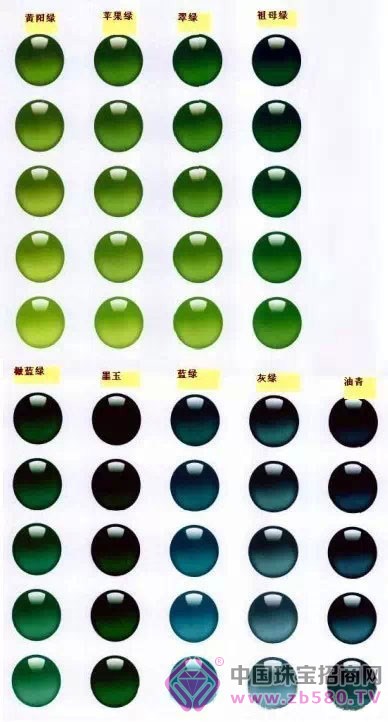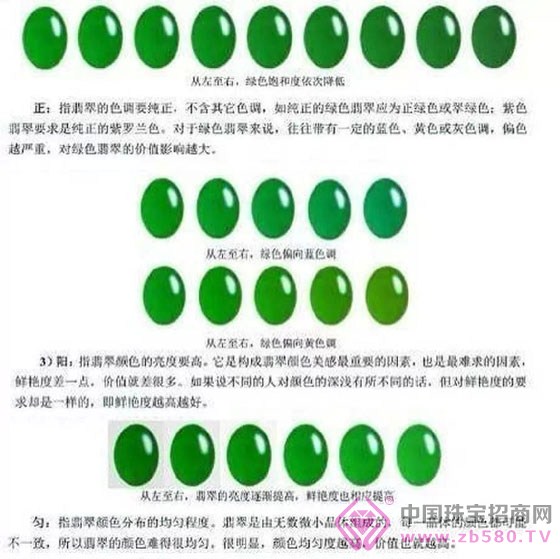Regarding the green of jade, there seems to be an inexhaustible topic. The classification and naming of jade green is such a topic.
The green of the jade is the most beautiful and precious, but it has a wide variety and is rich and varied. It is not static and has more or less differences. Therefore, the green classification and its name are the first step to master the green. The classification and naming of emerald green can be divided into traditional classification and modern classification. Modern classification also includes the words of experts and scholars and the interpretation of green classification in the national standards of jade grading. No matter how you name it, we should have a clear understanding and understanding.



Traditional classification
Traditional classifications have always used the long-established conventions, which are consistent with the green and emerald greens of plants and animals that are common in life, that is, the name of the plant or animal is named after the emerald green. The green of jadeite is thus divided into the following categories.
Glassy green: rich and glassy
Brilliant green: rich
Gemstone Green: Dark green emerald
Glass green: the color is too shallow and not rich
Yang Qiao Green: Green and bright colors
Huangyang Green: Yellow green, such as early spring, boxwood, young leaves
Light poplar green: light yellow green
Green onion green: color such as green onion leaves, slightly yellowish
Spinach green: dark as spinach leaves, with blue-gray
Parrot Green: Color like a budgerigar green feathers, with a yellow tone
Bean green: color such as bean blue
Melon green: color such as green melon skin, micro green
Melon skin: color like blue melon skin, green in green
Loofah green: color like loofah
蛤蟆 Green: Green with blue or gray-black
Uniform green: light green, light color
River water green: green dull, turbid
Gray-green: gray with gray
Gray-blue: there is impure blue in the gray
Oil green: color green dark is not pure
Oil green: color is not dark
Dark green: dark green, dark green, sometimes dark black
Gold silk green: green like floc
疙瘩 Green: Large unconnected green
Dry green: green opaque
Flower green: green is punctate, filamentous, fluffy, reticular
Jade grading national standards.
The classification of green in the Jade Classification National Standard is divided into three categories: green, green (light yellow) and green (micro blue).
Green; pure green, or green with a very slight, slightly noticeable yellow, blue tone.
Green (yellowish): Green with a yellow color that is more noticeable.
Green (brown): Green with a more subtle blue hue. If the classification is missing the gray tone, it is not too complete.
In summary, the analysis of traditional and modern methods for the classification of jade green, there are four ways, one, by color classification, such as emerald, boxwood green, bean green. Second, it is classified by green concentration, such as green, light green, and shallow green. Third, it is classified by green shape, such as gold silk green, green green, and silk green. Fourth, it is classified by transparency, such as glass green and dry green.
Traditional classification does not conflict with modern classification. Their goals are the same, the same way, the cross-integration, and mutual interpretation. The traditional classification is due to the intuitive feeling, and the emphasis is on the extremely small difference. The modern classification uses the color tone as the benchmark to interpret the difference between green and green. The traditional classification is detailed and too detailed, resulting in a lot of names that cause a lot of trouble for many people. In contrast, Moto divides green into nine categories, which already cover all the characteristics of green. This classification method is easier to grasp and comprehend. It will not increase the burden of understanding due to the cumbersome name, and at the same time, comprehend its classification. After the green meaning, it is more helpful to understand the many greens of traditional classification. Of course, the traditional classification also has its own characteristics, that is, the names of things that are common in life and green and equal. From these names, we can imagine the appearance of emerald green. However, traditional classifications are too complicated and pose certain difficulties for the definition of certain greens. It should be noted that the concept of concentrated Zhengyanghe is extremely easy to be confused with the green classification. Concentration Zhengyang is to evaluate the grade level of emerald green to distinguish its advantages and disadvantages and value. It is not the classification and naming of emerald green.

In practice, the classification of emerald green can be simplified to the following four categories to be easier to understand.
1. Positive green: emerald green without any color cast, green and pure. Including emerald, emerald green, apple green, yellow sapphire green.
2, yellowish green: slightly yellow in green, medium tones. Including boxwood green, green onion green, parrot green, bean green and so on.
3. Blueish green: slightly green in green. The color is dark. Including blue green, spinach green, melon green, oil green and so on.
4, gray ink green: the color is not bright, the color is dark, and the green is entrained with gray and black. Including dark green, green, gray green, oil green and so on.
After sorting out the veins of the green classification, it means opening the first door to know the emerald green. Everything suddenly becomes more and more clear. You don’t have to worry about the uncommon names of the emerald green. You should focus on several types of key green, other minor greens only. Just understand.
Shaoxing Lenore Textile Co.,Ltd , https://www.lenoretex.com
![<?echo $_SERVER['SERVER_NAME'];?>](/template/twentyseventeen/skin/images/header.jpg)